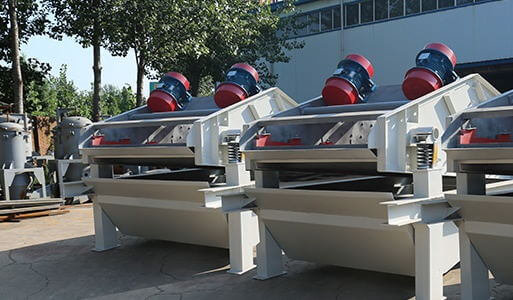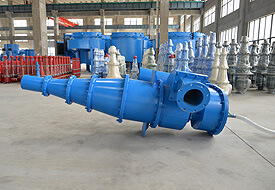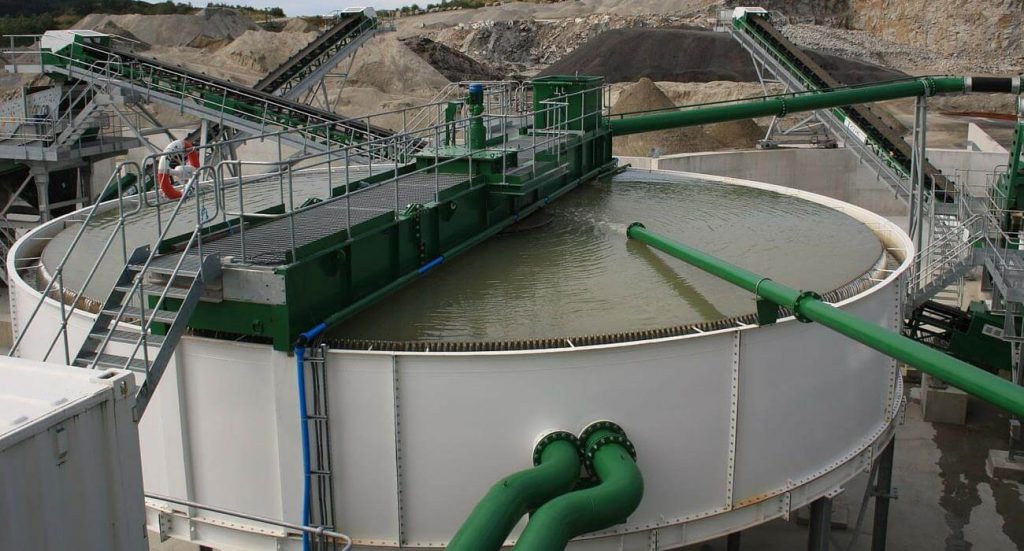Tailings are “waste” discharged by mining enterprises under certain technical and economic conditions. The development and utilization of a large number of tailings accumulated over a long period of time can not only “turn waste into treasure”, but also effectively relieve the pressure on resources and the environment. In production, the properties of tailings ores are different, and the mineral composition, specific gravity, concentration, particle size and distribution are also different. To improve the effect of dry drainage, try to reduce the occupied area and investment income as much as possible. And after the dry tailings processing plant can be reused, such as filling gobs, making building materials, road repairs, fertilizers, etc.
Why use the dry tailings process?
- The dry tailings process can solve the environmental pollution and potential safety hazards caused by the accumulation of traditional tailings, such as tailings dam failure and land occupation;
- Less investment and great benefit: On the one hand, it greatly saves the company’s safety, ecological environment management funds, energy conservation and emission reduction and tailings pond maintenance costs.
- The valuable components in the tailings can be recovered to improve the economic benefits of the enterprise.
Dry stack tailings process
Dry stack tailings is a new type of tailings reprocessing process, which refers to the method of concentrating and dehydrating the tailings slurry output from the beneficiation process to form slag with low water content, sedimentation and solidification, and stacking slag on the site and transporting the slag to a fixed location for dry stacking. Its main process method is: concentration equipment + dehydration equipment + conveying equipment.The dry tailings process can relieve the pressure of the tailings storage capacity, reduce the safety hazards of the tailings storage, and increase the means of tailings reuse. It is a tailings treatment process for realizing green and environmentally friendly mines
Generally, the dry stack tailings processing system mainly comprises a slurry pump, a hydrocyclone, a high-efficiency thickener, a high-frequency high-efficiency dewatering screen, a box filter press, and a slurry conveying device.
Process Details:
The tailings are transported to the hydrocyclone by the slurry pump for concentration and classification. The sand settling in the hydrocyclone enters the high-frequency and high-efficiency dewatering screen for dehydration treatment, and the overflow enters the high-efficiency modified thickener for concentration treatment. Coarse tailings processed by high-frequency and high-efficiency dewatering screens are transported to the stockyard for storage by belt conveyors. Among them, the tailings after the high-efficiency transformation of the thickener are transported to the box filter press by the slurry pump, and the filter cake of the filter press is unloaded on the belt conveyor, and the fine tailings are transported to ore stockpiles.
Related Equipment
Dry Stack Tailings Process Advantages
1. Small footprint and low follow-up production costs
Concentrating and dehydrating the tailings and then discharging them dry can not only save the construction and routine maintenance costs of the traditional tailings pond, but also make full use of the backwater, greatly saving the floor area and saving the reclamation cost after the tailings pond is closed.
2. High safety and environment-friendly
The tailings dry discharge process avoids the risks of dam break, overflow and dam collapse in the tailings pond, eliminates potential safety hazards, saves safety investment, and reduces environmental pollution.
3. Less investment, significant social and economic benefits
Under normal circumstances, the production cost of tailings dry discharge is about 3%-10% higher than that of tailings wet discharge, but in terms of the construction cost of tailings storage facilities in the early stage, tailings dry discharge is more expensive than tailings wet discharge. It saves about 30%, and the quantity of tailings stockpiled on the same area of land will increase by about 20%-30%, which reduces the occupied area accordingly. In addition, when the tailings are comprehensively recycled in the later stage, the dry tailings are easier to recover and utilize than the tailings slurry stored in the tailings pond, and it is in line with the current national policies on tailings discharge, which has obvious advantages social and economic benefits.
Application of Tailings Processed Materials
1. Sand and gravel aggregate is the largest, indispensable and irreplaceable basic material for construction of infrastructure projects such as buildings, roads and bridges. However, sand and gravel aggregates are non-renewable resources, and thousands of years of mining have caused great damage to the earth’s environment. In my country’s metal and non-metal mining industry, in the long-term mining and production process, the mine produces a large amount of waste rock and tailings.
2. Concrete fine aggregate
When using tailings as fine aggregate for concrete, the same requirements for coarse and medium aggregate should also be considered. Generally speaking, tailings sand is better than sea sand, because sea sand often contains salt and chloride ions, which can easily corrode steel bars, and the surface of tailings is rough and angular, which can increase the strength of concrete. However, the tailings are used as fine aggregate, which requires a certain particle size. When the particle size does not meet the requirements, the tailings need to be screened. Because the coarse sand makes the concrete relatively dry, the viscosity decreases, and the workability is not good; the ultra-fine sand not only makes the concrete easy to segregate, but also requires a large amount of water, thereby increasing the amount of cement.
3. Mix of cement
Adding an appropriate amount of mixed materials to cement can not only improve some properties of cement, but also save the consumption of basic materials. Mixed materials are divided into two types: filling and active. At present, blast furnace slag and fly ash have become commonly used cement active mixing materials. In fact, some tailings are also suitable as mixed materials, such as the tailings of vanadium-titanium iron deposits in amphibolites. In addition, waste rocks (or tailings) with a high content of amorphous substances, such as glassy volcanic rocks, tuff, pumice, etc., can also be used as active mixed materials.
4. Various stone bricks
In fact, many tailings can be used to make steam-cured bricks/autoclaved bricks. This kind of bricks is made by cementing the tailings with a certain gelling agent and then curing them with steam, or even curing them with high-pressure steam.
With the release of the national “Green Mine” standard, the dry stack tailings process has shown significant advantages in economy, environment and safety, and has become an essential choice for tailings treatment. Specifically analyze tailings particle size, concentration, composition, and mud content, and comprehensively consider backwater quality requirements, tailings scale, and investment budget to customize solutions. Choose the dry stack tailings process suitable for the situation of the concentrator, and customize reasonable mining equipment.



